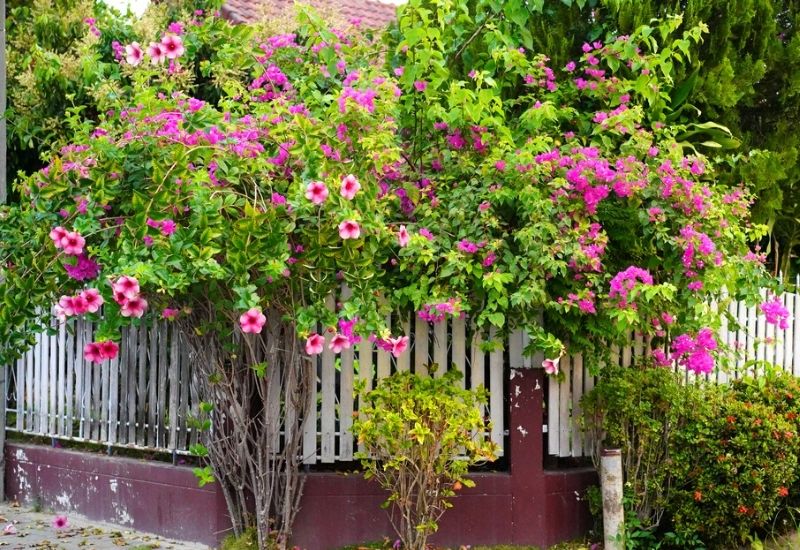
Vining perennials climbing towards the Sun, flowers and beautiful foliage up trellises, over gazebos, up walls and fences… That’s it – I just wanted to give you a mental picture of what climbers can do for your garden or terrace…
And most amateur gardeners underestimate the landscaping value of vines. But you won’t be one of these after you’ve seen what you can do with them!
Full-Sun perennial flowering vines and climbers are excellent to cover more or less unsightly structures, decorate trellises and gazebos but also to give a vertical dimension to your garden.
Places in full Sun are ideal for many showy flowering vines, like wisteria, bougainvillea and passion flower. All love sunny spots, but they are all different and with some different needs.
So, when choosing vines for that sunny corner of your garden, make sure that they are suited for your hardiness zone and growling conditions. Here are 15 of our all-time favorites sun-loving flowering vines that come back every year.
Any of these may grace your garden soon, but first let’s talk about what perennial vines can add to your garden that soak up sunshine from sunrise to sunset.
Full Sun and Perennial Vines
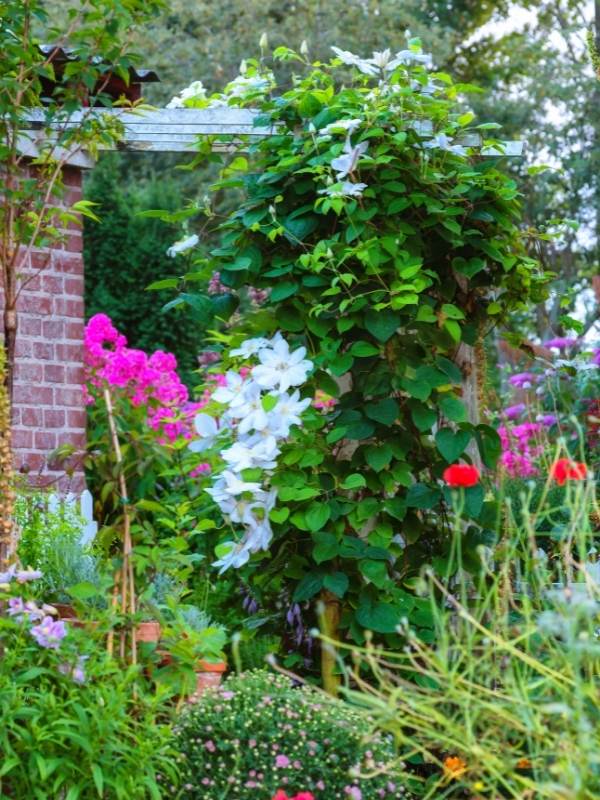
Why would you grow perennial vines in full Sun? There are a few key functions if vines in gardening. But let’s start with the fact that they exist in Nature and in fact the are far more common than we think… So, if you want a natural look, vines bring together and “fuse” different levels of your planting.
More specifically, we use vines to:
Can I day this? Very often I look at a garden and there’s that “something missing”… Then you mentally add a vine or two here and there and it suddenly comes to life. Try it… Have fin going round your neighbor’s gardens and add a climber here and a creeper there…
Most vines are perennials. That gives you the added bonus that you don’t need to grow your climbing plants year after year. Especially with vines, having a good height early in the season is a great advantage. Some may need pruning though, like wisteria and bougainvillea.
Finally, let’s talk about “full Sun”. You may have many more areas in full Sun than you think. Basically as long as a spot has bright light for the whole morning or the whole afternoon, that means “full Sun” for gardeners. To be technical, it means more than 6 hours a day – on average. But what I’d like you to focus on is “bright light” – it does not mean “direct light”.
Now it’s the moment you have been waiting for… Ready to meet all our amazing perennial vines that love the Sun? Here we go!
15 Amazing Sone-loving Perennial Vines That Do Well In Direct Sun
These full-sun flowering vines will give color, foliage, texture and a vertical dimension to that sunny spot in your garden that just needs some freshness and life!
1. Bougainvillea (Bougainvillea spp.)
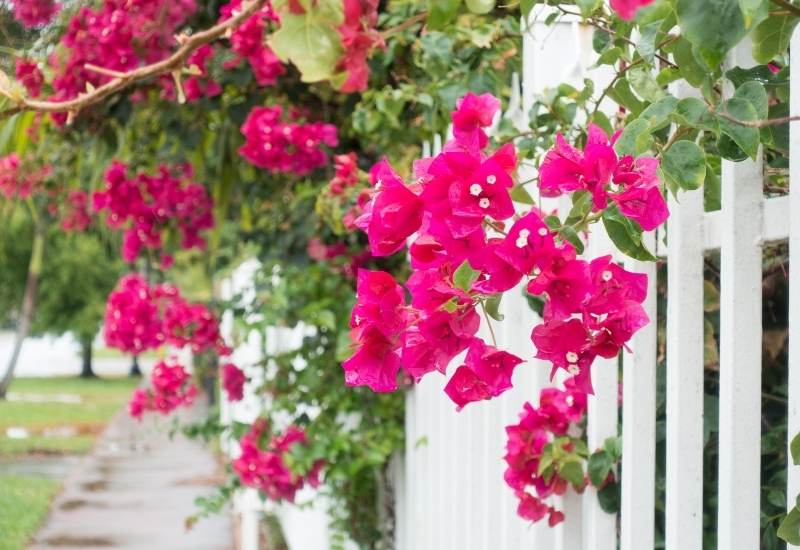
When I think about sunny Mediterranean walls and fences, bougainvillea’s massive blooms come to mind. This amazing climber turns totally bright red, magenta, purple, white, yellow or orange when in bloom. But the flowers are small… So how come? The bracts around the flowers are of the sunniest colors ever!
There are many species of bougainvillea, some are massive giants that can literally cover whole walls, others are short and compact. But in my view no perennial climber is more suggestive of hot Mediterranean gardens, streets and fences than this wonder of Nature.
2. Passion Flower (Passiflora spp.)
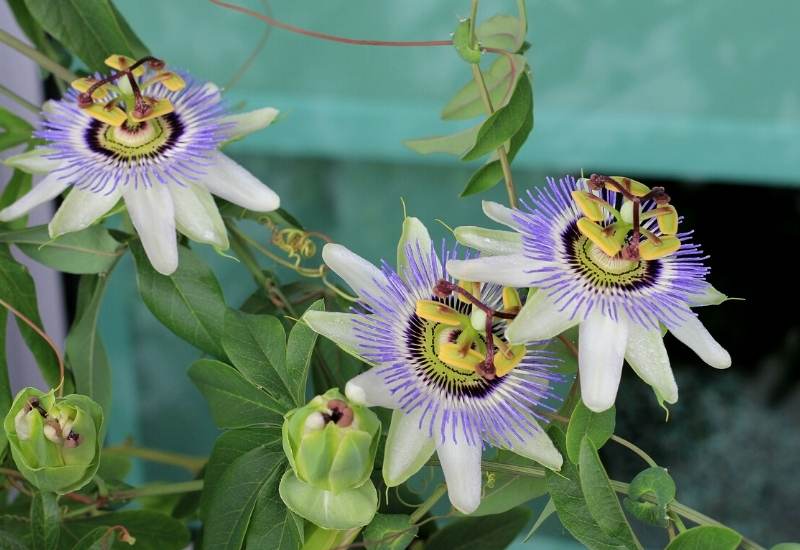
Passion flower is a perennial climber for full Sun that can turn even the dullest spot in your garden into a spectacle! It takes its name from the very unusual and exotic shape of the flower; some have seen a crown of thorns in it.
And the colors it offers are striking: from white to purple, you can have most combinations. Then, of course you can also eat the fruits!
Passion flower is a light looking climber, which will look striking on fences and trellises It is not ideal to give a full cover of walls etc. I’d rather use it to draw attention to a spot rather than divert from it.
3. Rose ‘Paul’s Himalayan Musk’ (Rosa ‘Paul’s Himalayan Musk’)
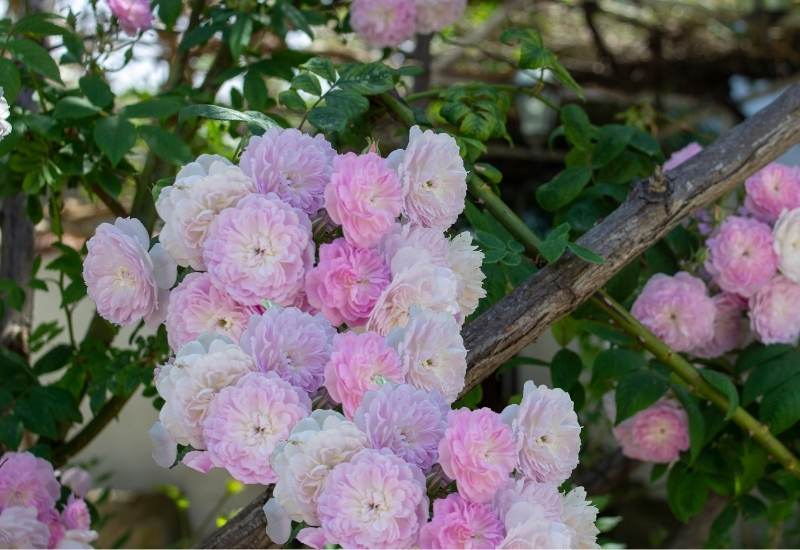
Climbing roses often love full Sun, especially in colder countries, and ‘Paul’s Himalayan Musk’ is quite cold hardy. So, if you live in a cool region and you want a wonderful vine… It has slightly fragrant white double flowers and it blooms profusely.
It is also a large variety, excellent to cover large walls or structures. It also has very flexible branches, so it’s easy to train.
Rose ‘Paul’s Himalayan Musk’ is a winner of the prestigious Award of Garden Merit by the Royal Horticultural Society. It can also be used in borders or to cover whole pergolas.
4. Mexican Flame Vine (Pseudogynoxys chenopodioides )
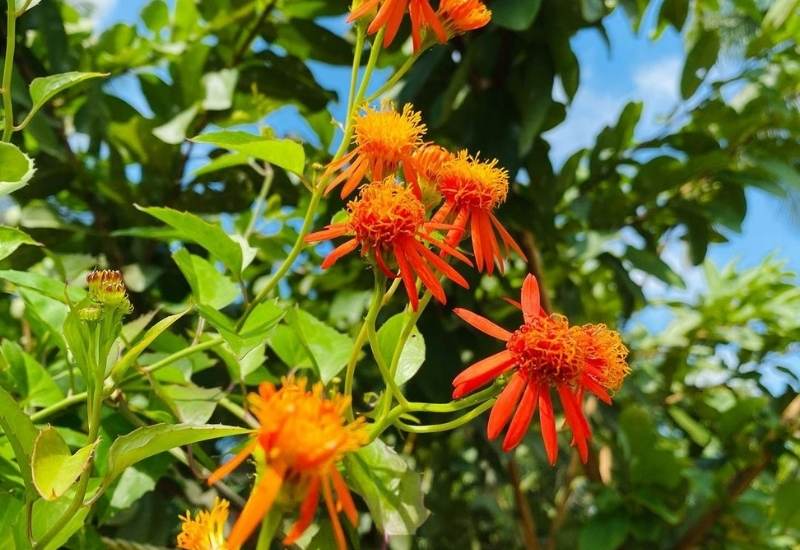
Mexican flame vine is a Sun loving herbaceous climbing perennial for hot regions. It has lush and thick heart shaped foliage. And once a year, it fills with fun looking bright orange flowers.
After it blooms, it produces puffs of seeds a bit like those of dandelion. It will also attract a lot of bees, butterflies and other pollinators.
Mexican flame vine is suitable for an informal setting because it looks wild and untamed. Having said this, it is ideal to cover walls.
5. Common Jasmine (Jasminum officinale)
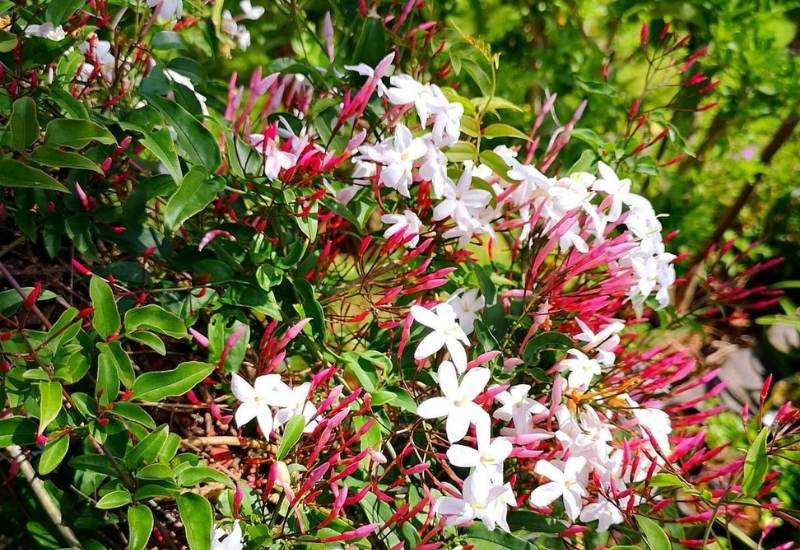
Common jasmine is a classic perennial vine that likes full Sun and intoxicates you with its fragrance! The sea of white flowers with a scent you can smell from a distance will cover the whole plant like snow.
And if you live in a fairly warm country, this most famous of jasmines will also be evergreen, so you can have its beautiful leaves in winter as well.
It is often grown to cover fences, creating a climbing hedge with the sweetest look and smell. But you can use it for pergolas and gazebos, or to cover walls as well.
6. Dipladenia (Mandevilla boliviensis)
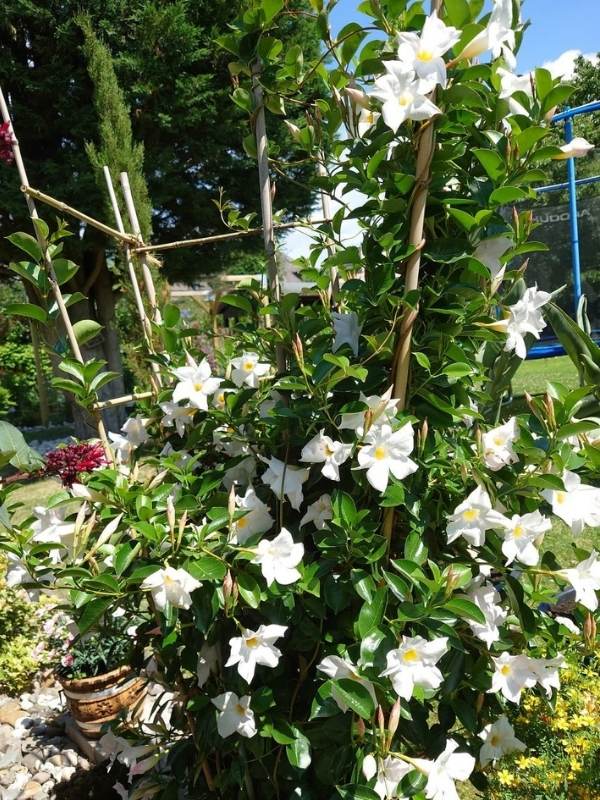
Dipladenia is a small perennial vine with large and showy flowers that likes full Sun, especially in cool countries. It has trumpet shaped blooms that are usually white or red with a yellow center.
They come on thin “rope like” vines with large, dark green leaves. It’s a very decorative plant and a winner of the Award of Garden Merit by the Royal Horticultural Society.
You can’t use dipladenia to cover a wall, but it could just climb up a trellis or pergola. Also, the foliage is sparse but beautiful, so, it is not good to hide structures. It is mainly a container plant.
7. Kiwi (Actinidia deliciosa)

Kiwi is a beautiful perennial climber with exotic looking large and round leaves and it too likes a lit of Sun! most people who grow kiwi vines for its delicious fruits also appreciate its beautiful foliage.
And did you know that it has white fragrant cup shaped flowers too? You can get the best of both worlds with this tropical vine.
One thing though; it will need regular pruning and make sure you have lots of water… kiwi plants drink like few other plants in the whole world!
It is ideal for a country pergola or a fence. In fact it does provide good shade. However, even mixed in with purely decorative plants, it still brings in an exotic and tropical touch.
8. Japanese Wisteria (Wisteria floribunda)
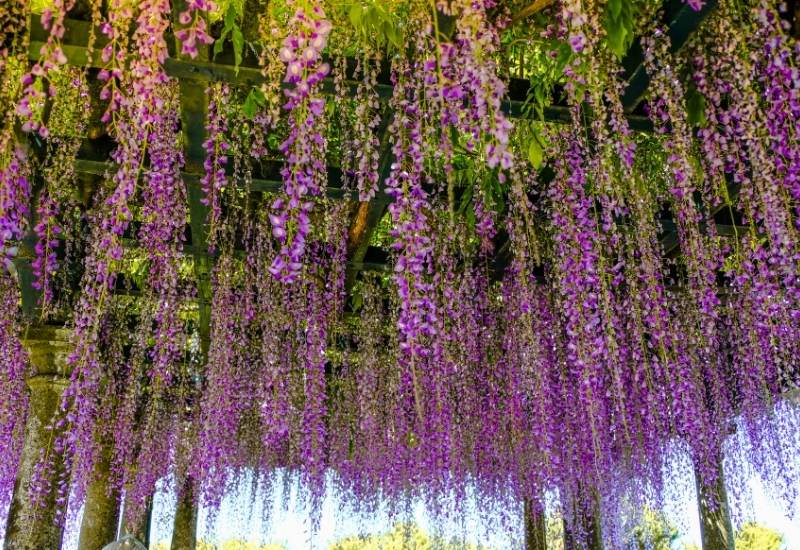
The queen of purple blooming vines is for sure wisteria and it too will like a place in the Sun! This immense bloomer has made history and year in year we await the pictures of Japanese wisteria filling whole parks with its impressive and very fragrant flowers that drop from the vines…
I must say that the pinnate foliage is elegant as well. Wisteria needs pruning to encourage blooms. There are many prize winning varieties, including the lavender and violet ‘Burford’ cultivar.
How could you use Japanese wisteria in your garden? It can turn a a pergola into a corner of heaven, or frame a terrace; it can transform your entrance into a vertical garden…
Or if you have enough space, you can even have a whole wisteria garden, as they do in grand parks in Japan and China!
9. Oriental Bittersweet (Celastrus orbiculatus)
Oriental bittersweet is an elegant Sun loving woody vine that fills with orange red berries in the fall and winter. The leaves are tiny but pretty, oval and attached to the branches. It will bloom in late spring with many small green to white flowers.
But this is a vine you want to bring a spot of color and interest in the cold months, when the bright berries will lighten up your garden.
It is very good for fences, though it is deciduous. Alternatively, grow it on a trellis, maybe in front of a boring wall. This way you will turn that bring brickwork into an interesting pattern.
10. Rose ‘Albertine’ (Rosa ‘Albertine’)
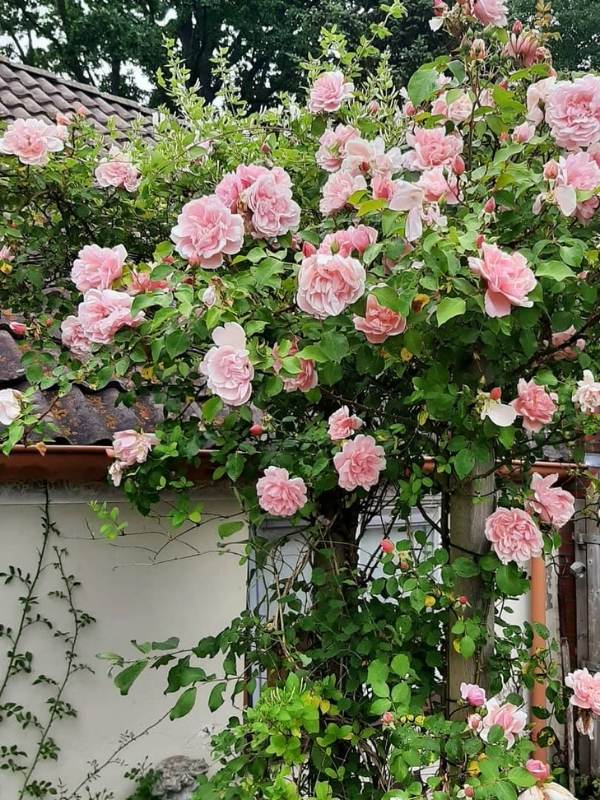
Rose ‘Albertine’ is Sun loving perennial rambler with a very romantic look. It is a vigorous plant that likes to clamber up walls or drain pipes and it fills with fully double rose flowers with a lovey smell. These come from copper pink buds which are attractive as well.
On top of this, tue foliage is very dark and lush – the perfect setting for the amazing bloom of this vine. This rose is also a winner of the Award of Garden Merit by the Royal Horticultural Society.
Rose ‘Albertine’ is a lovely choice if you want a wall to turn romantic, or if you want a pergola to have that old world look we all love so much!
11. Grape Vine (Vitis spp.)
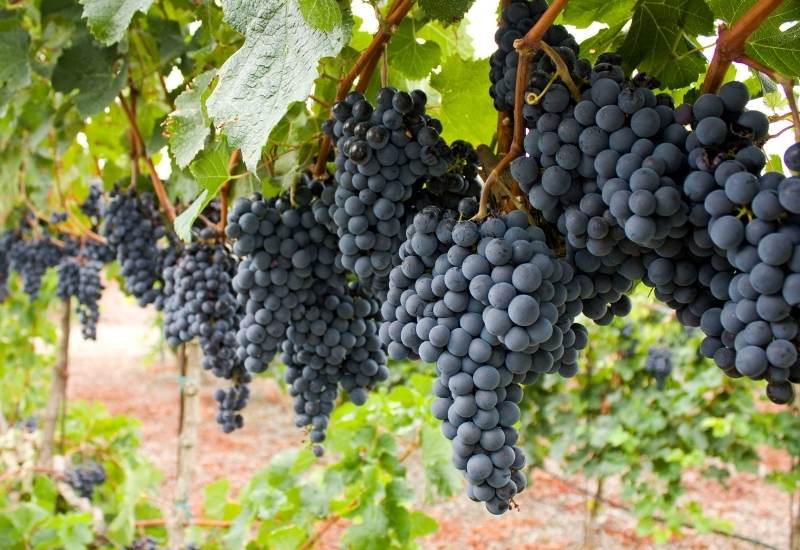
If you have lots of Sun, have you thought about growing grape vine? Once upon a time, gardens and orchards mixed and still this rule is used in cottage gardens. Grape vines are quite beautiful thanks to their foliage and very “ancient Greek looking” plants…
The grapes themselves are quite attractive as well. If you want to achieve this mix of decorative and productive grape vines are perfect.
Grape vines are quite common for pergolas in most Mediterranean countries. You may wish to reproduce this look by growing one of the many varieties of this great perennial vine.
12. Arabian Jasmine (Jasminum sambac ‘Grand Duke of Tuscany’)
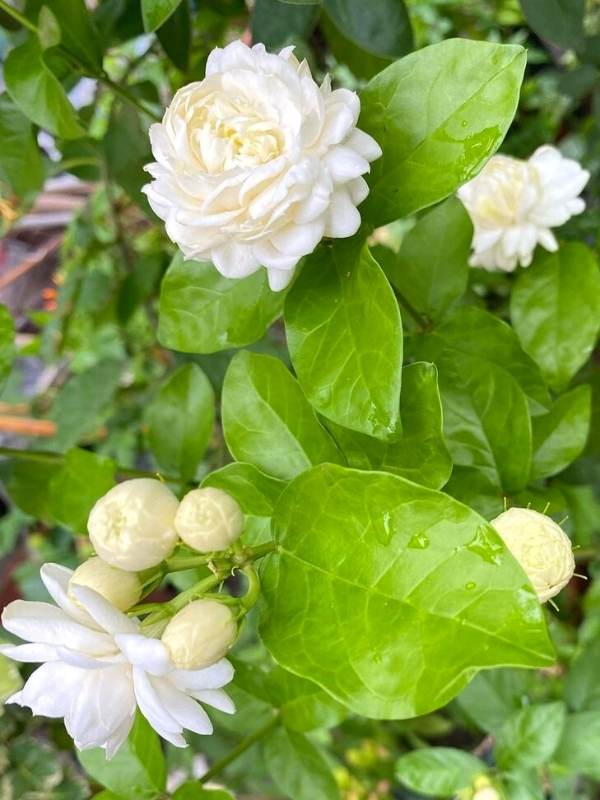
Arabian jasmine is an unusual and Sun loving vining variety of jasmine. The flowers are fully double and they look a bit like gardenias or camellias. They are also very large for a jasmine, in fact they can reach 2 inches across, or 5 cm.
On the other hand, it is only a small plant. The leaves are also quite special: they are large and ruffled and of a light green shade. This evergreen perennial shares one thing with other jasmines though: it is sweetly scented!
This is an elegant and showy plant that you want for a lovely pergola, on a terrace climbing up a post, column or trellis. It is also an excellent container plant.
13. Variegated Kiwi Vine (Actinidia Kolomikta)
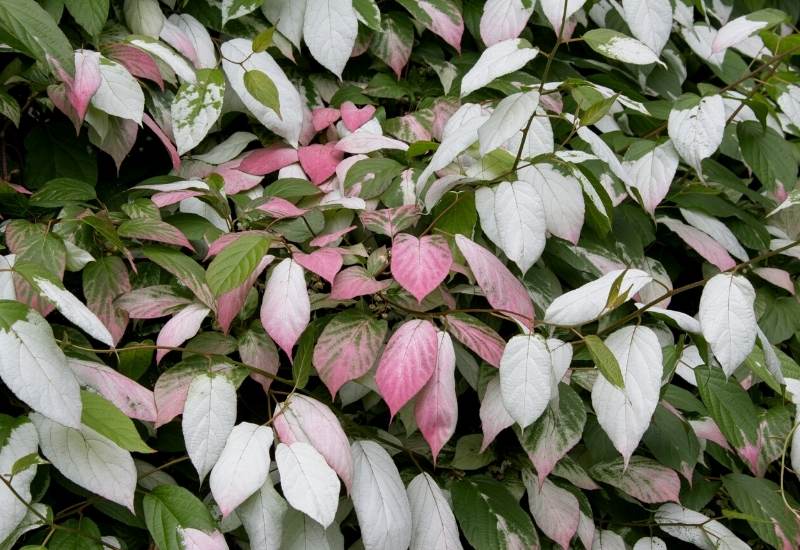
Sun loving variegated kiwi vine will regale you with green, white and pink leaves from spring to fall! This very particular variety of kiwi vine is in fact far more common as a decorative climber than a fruiting plant.
The lush and colorful foliage is indeed a great spectacle, but it too flowers and fruits. The flowers are white and cupped, and the fruits are edible as well.
Grow variegated kiwi vine over a gate, or on the porch at the entrance of your house. This is a very showy plant, and a winner of the Award of Garden Merit by the Royal Horticultural Society as well!
14. Clematis ‘Rouge Cardinal’ (Clematis ‘Rouge Cardinal’)
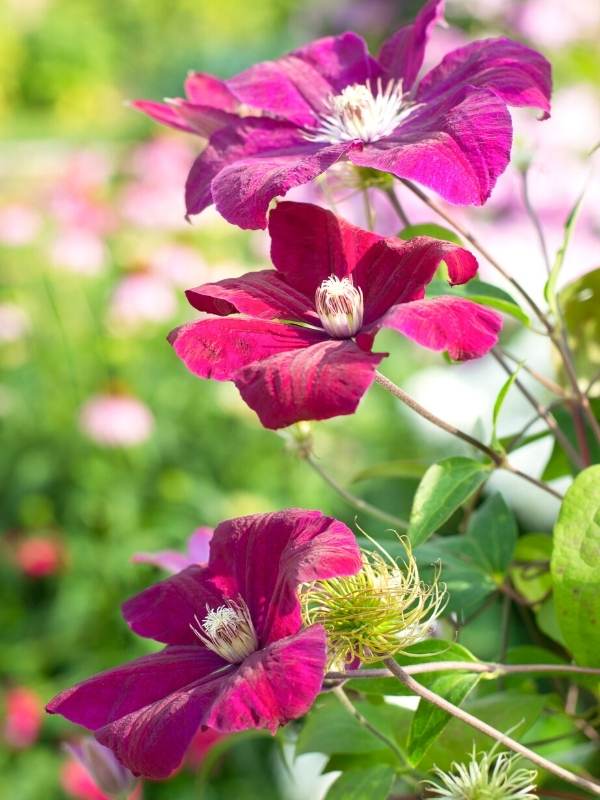
There are quite a few clematis varieties that can climb on trellises in full Sun but I have chosen ‘Rouge Cardinal’ – let me tell you why! To start with, this is a large flower variety. Each flower head can reach 6 inches in diameter (15 cm).
So you can see why it will look good in the Sun. Next, it is a late flowering variety; you can have colors in the fall as well with it. Finally, the velvety and deep crimson flowers of ‘Rouge Cardinal’ are just awe inspiring!
‘Rouge Cardinal’ is a show stopper! Grow it on a trellis at the front of your garden, over your main gate or as a centerpiece over your gazebo. You can’t and you should not even try to hide this striking beauty!
15. Moonflower (Ipomoea alba)
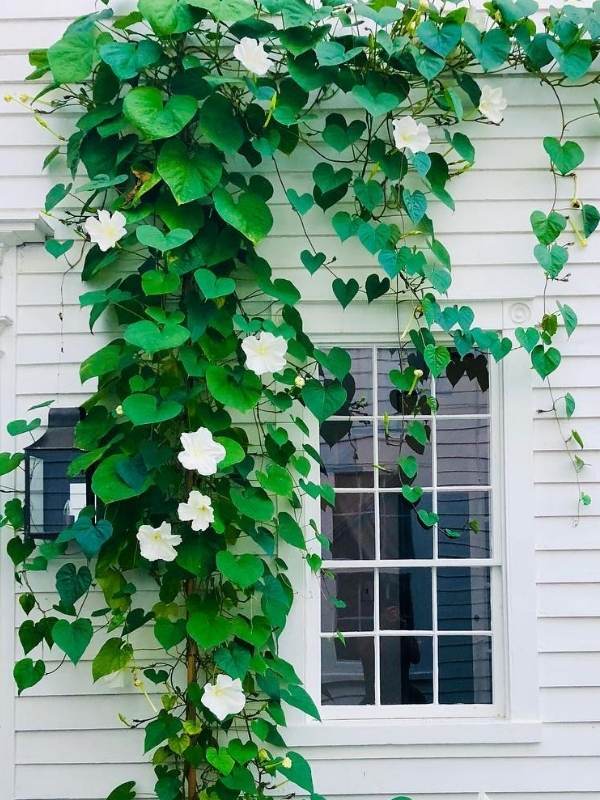
Moonflower is a wonderful climber that – despite its name – loves full Sun positions.. The heart shaped foliage of this perennial vine is only the backdrop to the main show.
The the large, bell shaped flowers can reach 6 inches in diameter (15 cm) and they open every morning in a matter of minutes. This is actually a great show to watch! Then, every night, they close again.
Moonflower is a must have climber for a white garden. But even in other gardens, it looks great on any trellis, against a wall, over a pergola, gate or fence.
No Garden Can Do Without a Sun Loving Perennial Vine or Two…
I bet I won the wager, did I? I am sure now you are looking at perennial climbers with a different eye. Now, look at your garden…
Find a sunny spot that needs a plant to mix in the different levels… or find a wall you need to cover… or that sad pergola that needs some life… Done?
Now sure you can fill it in with the beauty of one of the wonderful Sun loving perennial vines you have just met?

Written By
Amber Noyes
Amber Noyes was born and raised in a suburban California town, San Mateo. She holds a master’s degree in horticulture from the University of California as well as a BS in Biology from the University of San Francisco. With experience working on an organic farm, water conservation research, farmers’ markets, and plant nursery, she understands what makes plants thrive and how we can better understand the connection between microclimate and plant health. When she’s not on the land, Amber loves informing people of new ideas/things related to gardening, especially organic gardening, houseplants, and growing plants in a small space.

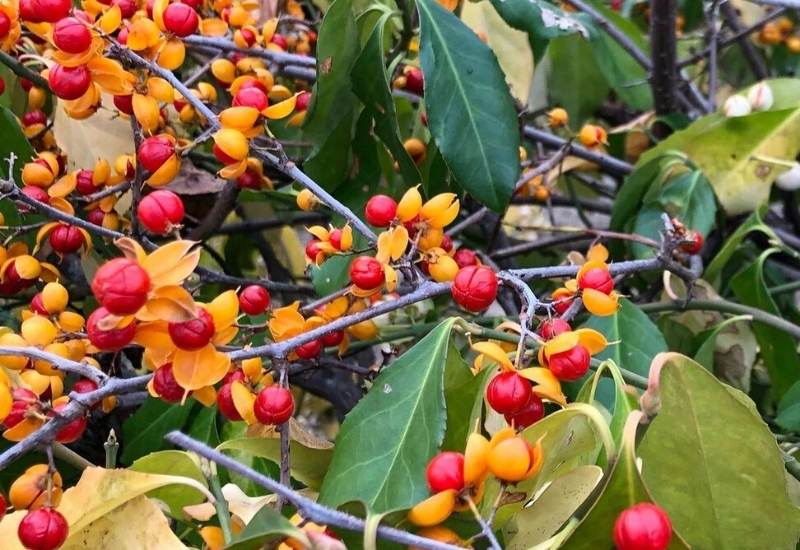
So disappointed. I live in the state of Ohio, zone 5 and you have very few vines that would grow up here.
We have a pergola next our pool in which we planted Sky’s The Limit yellow roses a few years ago. They are now diseased and loose leaves as soon as the plant produces them. We would like to replace with a climbing vine to cover the pergola. The pergola is about 10′ tall with 1 x 4 lattice panels on the sides. This area gets full sun all day long; no partial shade. We are in Columbia, SC where temperatures and humidity is fierce in the summer, and have occasional nights in the low 30’s, high 20’s during the winter months. Can you recommend a beautiful climber for us? Thank you for your input.
I’m sorry to hear about your diseased roses. Given your location in Columbia, SC, and the conditions you’ve described (full sun, high temperatures and humidity in the summer, and occasional nights with low temperatures in the winter), I can recommend a few climbing vines that would be suitable for your pergola:
Wisteria (Wisteria sinensis or Wisteria floribunda): Wisteria is a beautiful and fragrant climber with cascading clusters of purple or white flowers. It’s a vigorous grower that can withstand heat and humidity, but it may need regular pruning to keep it in check.
Trumpet Vine (Campsis radicans): This fast-growing, deciduous vine produces large, trumpet-shaped flowers in shades of orange, red, or yellow. It’s heat and humidity-tolerant and can withstand occasional cold snaps in the winter.
Jasmine (Jasminum spp.): Several jasmine species, such as the Confederate Jasmine (Trachelospermum jasminoides) or the Common Jasmine (Jasminum officinale), would be suitable for your pergola. These evergreen or semi-evergreen vines have fragrant white or yellow flowers and can tolerate full sun and high humidity.
Passionflower (Passiflora spp.): Passionflower vines are known for their exotic, colorful flowers and can tolerate full sun, heat, and humidity. Some species are hardy enough to withstand occasional low temperatures, such as the Maypop (Passiflora incarnata).
Climbing Hydrangea (Hydrangea anomala subsp. petiolaris): This deciduous vine produces clusters of white flowers and can tolerate full sun in your region, although it may prefer some afternoon shade in the hottest months. It’s hardy enough to withstand occasional cold snaps in the winter.
Make sure to research each option to ensure it’s the best fit for your specific needs and preferences. You may also want to consult with a local nursery or extension service for additional recommendations tailored to your area.